| Welcome! to the ima Emailer ~ November 2008 Issue |

The IMA EMAILER brings you news from ima pros Fred Roumbanis, Michael Murphy, Bill Smith and ima pro staffers across the USA and worldwide.
| ima Pro Fred Roumbanis Makes Amistad Easy |
What does ima pro-staffer Fred Roumbanis do when he gets time off from his busy tournament schedule? You guessed it, Fred goes fishing!
In this issue, Fred tells us all about one of the country’s hottest new trophy bass destinations – Lake Amistad which straddles the border between Texas and Mexico. Amistad has become one of the hottest big bass destinations for US anglers in recent years.
Recently, Fred and Optimum Baits CEO Matt Paino headed down there to enjoy a Texas-style trophy bass fun fishing trip. They stayed at Byron Velvick’s Amistad Lake Resort.

Matt Paino says, “We would like to include our appreciation and gratitude to Byron Velvick. We stayed at his Amistad Lake Resort. The accommodations were great and Byron made sure that we, like all his guests, had an enjoyable time at his resort. One day, Fred ran into engine troubles and Byron let us use his boat and really bailed us out.”
Since the Bassmaster Elite Tour first started stopping there only a couple of years ago, Amistad instantly became a hot destination for many anglers from across the country, and for those who have not been there yet or who are thinking to go there soon, I’d like to make this not only an ima story but also a destination piece, says Fred Roumbanis.
I’ll talk primarily about ima baits but also include the other baits that I would typically use on Amistad, meaning swimbaits.
So, I will give some information about those lures, but also the story’s meant to help you do well if you go to Amistad – and this kind of story’s called a ‘destination piece’. So here goes!
| Fred’s History on Amistad |
My history with Amistad is, the first time I went there in November 2005 was right after a Bassmaster championship, I swung by on my drive home and fished Amistad for about four hours and caught about fifty bass. Nothing over three pounds, but just tons of fish, and I was blown away with how awesome the lake was.
So I was really excited to think I’d be coming back the next season in the spring when the big fish would be up and the Bassmaster Tour would officially stop there for the first time. What I’d heard was Amistad is an awesome springtime lake, big fish move up then in the clear water so you can see them, almost like in an aquarium. I was psyched!
I had that whole winter to plan for how I would approach Amistad. I had been thinking about trying my California-style swimbait tactics on Amistad, and I thought maybe I would have that whole technique to myself there, which I pretty much did. Swimbaits were well-known of course in California (where I grew up), but still at that time, swimbaits were not widely used on the pro tours.
Well, I finished second to Ish Monroe at that first Bassmaster Elite on Amistad in 2006, but in so doing, I actually brought swimbait fishing into the Bassmaster Elite series for the very first time. So that was a big deal for Amistad because not only did Bassmaster TV coverage of that event help Amistad become a hot new destination for big bass almost overnight, but it also become a destination for people to use big baits.
That first tournament on Amistad in March 2006 was pretty amazing. I thought I did everything in the off-season to be ready for those big fish, and Bassmaster had definitely scheduled the best time for us to be in there. I was confident going in that I would break 100 pounds at Amistad, and I did with 101.13 for 4 days.
I was catching 20 fish a day on a swimbait, all over 4 pounds, and culling 4’s to get 25 pound bags. The tournament came down to whether I’d get the one or two bites to make me a really big bag of fish. I caught so many quality fish the final day that my camera guy ran out of tape with about a 1/2 hour to go before weigh-in, and on my very last cast I hooked a nine-pounder. I actually touched and almost grabbed it before it bolted under the boat and got stuck in a tree and ended up losing the tournament for me. It’s funny but ‘losing’ the tournament meant I came in second place.
Despite that, I definitely was prepared for that kind of fishing on Amistad. I grew up fishing the California Delta and Clear Lake. Those are two big bass factories where I had really cut my teeth in tournament fishing. So big fish have always been something that I have been prepared for, and I really prepared myself for what Amistad had potential for. I just got that one bad break and dropped that nine-pounder that cost me the win. I had to live with that throughout the season. I had some nightmares you know, awful nightmares. I could have easily kept that nine-pounder engaged and brought it up, but I decided to feed it some line off the spool by hand. I had thought I was in open water, and I did not realize my boat was sitting right on top of a tree. As you may be able to tell, that one mistake still haunts me.
One of my main things whenever I go to Amistad, I go there with the intention of fishing for big fish. So I want to throw big baits. Like with the ima baits, let’s take my Roumba topwater for instance. I didn’t just want to throw the solo Roumba. I wanted to big up the presence of that bait by adding a tail section of a swimbait to the back of it, attached by a HitchHiker screw wire coil clipped on the back split ring. This gets clipped to the split ring above the rear treble hook.
What that does with the swimbait tail attached, it displaces more water on the surface, it kicks and gives the Roumba a bigger profile and presence. So we rigged the Roumbas like that on Amistad.
In the mornings, they really ate the Roumba well. I mean we had a solid Roumba topwater bite to start each day. Most mornings, you can have until about 9 o’clock for this. So basically, you have about 2 to 2-1/2 hours of good topwater fishing in the mornings on Amistad.

Look closely to see the swimbait tail that’s been attached by a wire clip to the end ring of this Roumba. The clip and swimbait tail swing independently above the tail treble hook.
Some time around 9 o’clock each day, the fish tended to stop roaming and would begin to tuck up into the cover, especially if the sun poked out. So then we went with the ima Flit. It’s a three treble hook jerkbait, almost five inches long. So it’s a good-sized jerkbait, what they call a ‘120’, and that’s just a little bigger than most other jerkbaits on the market.
Once they headed into the cover, which was bushes, shrubs and several kinds of scrub trees, you could still pull them out of there with the Flit. You could jerk it around the bushes, and make them come out and attack it. We were not really pinpointing a certain type of bush or tree. It didn’t matter. However, I did seem to notice some of the bigger fish came off salt cedar trees. It seemed there were more bugs or insects in the salt cedars when they flooded, and probably because of that, more bluegills and baitfish were around them. Even more spider webs were obvious in the salt cedars, and those trees with more bugs had more baitfish and bigger bass in them. Life attracts life!
When the fish tucked up into the cover after the morning topwater activity, the reason why we started to throw the Flit at them in the cover, is because of the way you can jerk the Flit around the bushes, it commands attention. It really shimmies when you work it. Then you let it suspend there for a second, and that truly antagonizes them. So the Flit moves real quick and erratically, and then it just sits there. And they come out and grab it. You can stop it right where you think is best, right in front of the bush where you think a bass is holed up. It’s not like something that’s swimming by, that’s only passing through. It stops and stays right in front of their bush. So it’s kind of like sitting there in their space, and they’re going to attack it for that reason. It triggers that reaction bite. These fish, they may not come out for something that’s moving past. If something just keeps going and passes by the bush, they’re not going to bother it. But as soon as the Flit stops and hangs around, that’s what makes them react on it.

Matt Paino savors the moment with a nice midmorning Flit fish. Matt says, “My one most important comment may be, when preparing to come to Lake Amistad, plan on upscaling all your baits. If you are used to throwing a 4″ jerkbait (100mm or so), go bigger and tie on the 5″ (120mm) ima Flit, for example. The lake has a good mixture of bait, ranging in all sizes. There is big and small bait for bass to choose from. However, you’ll have better chances to catch the bigger fish at Amistad if you throw the little bit larger baits.”
| Early Afternoon Swimbait Bite |
In the afternoon, you may want to get out the swimbait. The swimbait we threw during this trip was a new one that Optimum came out with – the Baby Line Thru. It’s a five-inch swimbait and its got a really wide head to it. That big head gives it a little bigger presence in the water. It just makes it look like a big, easy baitfish to a bass. So the BLT was our swimbait of choice. You can check out the new Baby Line Thru at www.optimumbaits.com.
Of course, you could catch swimbait fish early too, but after lunch was really when we’d use them. The bass at this time of day were deep in the thick grass. You’d want to cast the swimbait out and let it sink for a little bit, and get a slow roll down deeper usually on the inside grass lines. Where the grass is, an ideal depth for this is around 15-16 feet, so you want to slow roll that swimbait down through that, near the grass, near the tree tops, swimming in and out of the cover.
The cool thing is, as the water level rose daily on us during this trip, the grass was almost like kelp. What I mean is, at low tide in the California Pacific ocean, kelp looks like a mat all balled up and lays over on the surface. Well, as the water rose on Amistad, the grass stood straight up. So you can actually work your swimbait through it a lot easier. It wasn’t really matted up or too dense, not too tight together. There was a lot of room in the grass for the swimbait to move through it pretty freely.
So that’s where and when we were throwing the Optimum Baby Line Thru swimbaits in the afternoons.
When you are throwing the swimbait, you will be able to get by with the lighter colored patterns (such as the BLT Sexy Shad) in the clear water, and then go to the darker swimbaits and your chartreuse ones (like the BLT Table Rock Shad) in the stained water to catch your fish.

The nice thing about the Baby Line Thru when you hook a fish with it, the bait will slide up the line and not interfere with fighting a fish.

Since the BLT slides up the line, a fish is not biting down on it for the entire fight, so that helps you catch a few more fish than usual on one bait.

Yes! Baby Line Thru comes through in a big way for Matt!
| The Wind and the Rock N’ Vibe |
Also in the afternoons, or any time we were along a flooded treeline or a windy bank, we went with the ima Rock N’ Vibe lipless bait. Now that’s not a very big bait, but we went with that because a lot of the baitfish that we saw on Amistad this time were surprisingly tiny. So the Rock N’ Vibe’s a little loud, noisy bait that matched the hatch.
Actually, we did really well with the Rock N’ Vibe. Any creek we found that had just a little bit of stain or streaks of mudlines or wind blowing against brush lines or treelines where you could stay off a ways with the Rock N’ Vibe and cast into it – we caught numerous fish that way.
In many of these creeks, the water was high from recent flooding, so there’d be an outside treeline, and you’re not really near the flooded bank in these cases. So we were just staying ‘outside’. The trees were out in the flooded water, and you can see that in some of the photos.

Fishing the treelines was outstanding with the lipless Rock ‘N’ Vibe.

The backs of any creeks are places an angler can look for year-round action on Amistad. They’ll always be some shallow fish in the backs of the creeks. So you can go there anytime. With the Rock N’ Vibe in the wind, depending on the depth we were fishing, just cast out, and as soon as it hits the water start reeling. Give it a few jerks, kind of rip it back and forth. That bait, you can reel it slow and you can reel it fast, and it still is going to come in true without any trouble every time. So you can work it erratically.
What I particularly like when its windy (which it was this trip), is if there’s any kind of a mudline formed from the wind pushing against a bank, any bank.
Mudlines are awesome for throwing lipless crankbaits and it’s something I’ve always been successful at doing – fishing mudlines with a lipless bait.
Fish can get under a mudline, and even though it looks like its muddy, actually under the water, under a mudline, it is really clear under there. So basically, the mud is only a film over the surface, which is like perfect cover to a fish. Best of all, its a kind of overhead cover that you can fish right through it with treble hook lures! It’s pretty amazing that most of the mud is floating around on the surface. Yet underneath it is real clear.

Some great fish were landed on this trip courtesy of the ima Rock N’ Vibe.
| Late Afternoon Happy Hour |
And then in the late afternoons and evening hours, that was when everything just got awesome. The fish would come up, start schooling and start busting on bait.
The nice thing about when they are busting like that, it seems you can catch them on just about anything you want at those moments – and indeed we did! We had all the rods ready on deck with the different ima baits. You can throw the Flit, the Skimmer, the Shaker, Rock N’ Vibe or Roumba, and pretty much catch fish on all those when they’re schooling and breaking on bait on the surface. It’s a good technique to rotate through the different ima lures at such times. After you catch one or two fish on one bait, switch up and throw another bait so you don’t give them too much of the same one. If you rotate lures, you can catch a couple more fish faster that way.

The ima Skimmer proved perfect for late afternoon and evening topwater schooling action.
| Rod, Reel and Line Recommendations |
We had most models of ima baits and BLT swimbaits rigged on separate rods for the duration of our trip. As discussed throughout, we found times of day when and locations where one or another bait seemed better-suited to the situation.
For a lake like Amistad with some pretty tough cover and equally tough fish, we fished everything on 15 pound test baitcasting tackle pretty much straight across the board.
The Roumba and the Skimmer topwaters, we fished them on P-Line CXX. That’s a copolymer line and it floats. You want those baits to be on a line that can help keep them on the surface, yet won’t take away from the action.
On the Flit suspending jerkbait, we liked it better on sinking fluorocarbon line.
The Rock n Vibe really didn’t matter much. We fished it both on P-Line CXX and on fluorocarbon.

When Matt and I were here, the lake was flooded, so fish were scattered into the newly-flooded water, but this is not as unusual as it sounds for lakes like Amistad. This far south and on other similar lakes in Mexico, they tend to have seasonal water level fluctuations, depending on the year.
During this trip, we had some consistently strong winds. But even with all that, we had a pretty good trip.
The water color on Amistad is usually pretty clear, and as the lake fluctuates up and down, there is always going to be some of the same kind of cover as we described in this article, brush, trees, grass, creeks and so on, either being flooded or exposed. Amistad is filled with grass, cover and brush, so the fishing areas just expand or contract as the water goes up or down, and the fish tend to adjust to that fairly well.
If you ever get a chance to go there when the lake is low, spend as much time as possible looking over the entire place – and learning it. I think I have a pretty good memory and can remember certain things, obviously not everything, but then when the water comes up, I remember things like there’s a great ledge that should be coming up here, and then you can find it on the graph, and usually something like that, where the old shoreline used to be, you can throw out and catch a good fish on it right away.
As the water level rises, you have to really think in your mind and get a handle on where was that old shoreline. Cause that old shoreline is what those bigger fish become accustomed to, and a lot of those bigger fish like to stay on it. They can be very territorial, and they like to kind of stay on some of those older shorelines, even when a good amount of new water has risen over them.
Now you know, many of the bigger fish are going to live deep there, that’s just their nature. So keep that in mind at Amistad.
If you go to Amistad, of course there won’t be the same conditions we faced, but you should hopefully still be able to try some of the ima lures and tactics described in this trip report. Everything we’ve described is a typical day starting with a couple of hours of topwater, and then the fish stop roaming or chasing, pull into the cover, and once the sun peaks overhead after noon, you can go deeper down off the grasslines, and then find the schools up top toward the end of the day. A guy can go down there most any day of the year, spring, summer, fall, and being it’s so far south, the climate stays warm, so there isn’t that much of a winter. You can pretty much follow the plan I’ve given you here and catch fish all year round.
The awesome ima baits and swimbaits we discussed, those were our best choices, and I’d say they’re my perennial choices for this lake. I’m pretty sure I’ll be packing more of the same great baits the next time I journey there.
If you go to Amistad, I hope you can pretty much follow this story and try some of the lures, tactics and types of spots we fished, as they should have a chance to work most anytime there.
Like Matt and I, you may catch a lot of fish and some good ones. We hope you have a great time.

“We stayed at Byron Velvick’s Amistad Lake Resort. It just so happens Rick Clunn (center) was there teaching a class in bass fishing. So it was good to spend a little off season time hanging with a guy like that,” says Fred.
| Thank You! For Reading the ima Emailer |

ima’s a big name in Japan where ima is known for its hardbaits. ima is now making a big name for itself in North American too, with the help of U.S. bass pros who have designed new ima hardbaits for the USA.


















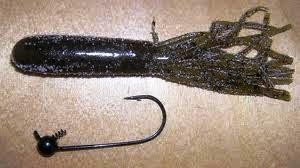
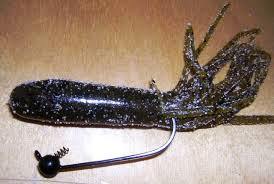
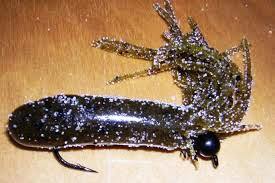
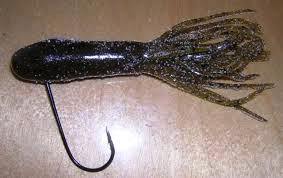
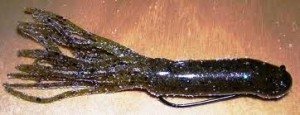
















 The first factor I’d like to discuss for the fall time of year is drawdown on drawdown lakes. Most common occurrences from my knowledge of drawdown lakes are from Missouri east to North Carolina, south to South Carolina, back across to Texas and about everything in between. In other words, the Midwest and Southeast, (with the exception of Florida). However, I presume a lake could be drawn down most anywhere there’s a way to do that and a reason.
The first factor I’d like to discuss for the fall time of year is drawdown on drawdown lakes. Most common occurrences from my knowledge of drawdown lakes are from Missouri east to North Carolina, south to South Carolina, back across to Texas and about everything in between. In other words, the Midwest and Southeast, (with the exception of Florida). However, I presume a lake could be drawn down most anywhere there’s a way to do that and a reason. In drawdown lakes or most any typical lake, crayfish generally live in water that’s 10-12 feet deep or less. On most lakes, they’re going to be in that opportune depth range. In clearer lakes, they may exist deeper as well, down to 20-30 feet.
In drawdown lakes or most any typical lake, crayfish generally live in water that’s 10-12 feet deep or less. On most lakes, they’re going to be in that opportune depth range. In clearer lakes, they may exist deeper as well, down to 20-30 feet. In the north, water temperatures around 65 to 60 trigger the crayfish movement. At the extreme north range, those crayfish being totally different species, probably don’t burrow at all because they’re more of a year-round rock-dwelling species. A lot of it is they’re just selective to the different environments. There’s just not a lot of clay for them to burrow on rocky lakes up north. The farther north you go, the less softer bottoms there are, and the more rock there is in general. So there are more rock-dwelling species of crayfish that stay out year-round. They don’t have a lot of clay to burrow in like the other clay-dwelling species.
In the north, water temperatures around 65 to 60 trigger the crayfish movement. At the extreme north range, those crayfish being totally different species, probably don’t burrow at all because they’re more of a year-round rock-dwelling species. A lot of it is they’re just selective to the different environments. There’s just not a lot of clay for them to burrow on rocky lakes up north. The farther north you go, the less softer bottoms there are, and the more rock there is in general. So there are more rock-dwelling species of crayfish that stay out year-round. They don’t have a lot of clay to burrow in like the other clay-dwelling species. A lot of your lakes that have drawdown, they do not have a whole lot of aquatic vegetation rimming the shoreline just because of the fluctuating water level. Any grass that gets seeded each summer, gets dried up during the ensuing drawdown. What happens is the harder bottom areas, especially in drawdown lakes, weedy stuff that was able to provide habitat during the summer, the aquatic plants that got rooted to rocks or to hard bottom becomes the preferred crayfish habitat for a few months – until late fall (coinciding with drawdown) which gets the crayfish population migrating into nearby burrowing areas of softer bottom.
A lot of your lakes that have drawdown, they do not have a whole lot of aquatic vegetation rimming the shoreline just because of the fluctuating water level. Any grass that gets seeded each summer, gets dried up during the ensuing drawdown. What happens is the harder bottom areas, especially in drawdown lakes, weedy stuff that was able to provide habitat during the summer, the aquatic plants that got rooted to rocks or to hard bottom becomes the preferred crayfish habitat for a few months – until late fall (coinciding with drawdown) which gets the crayfish population migrating into nearby burrowing areas of softer bottom. You’ll know you are in the right areas around this time of year, you may find bass with their noses scuffed up from rooting in the rocks for craws. Also when fish are feeding heavily on crayfish, you can feel their stomachs and the hard edges of the crushed-up crayfish can feel like gravel in their stomachs. Those are good areas where you want to be.
You’ll know you are in the right areas around this time of year, you may find bass with their noses scuffed up from rooting in the rocks for craws. Also when fish are feeding heavily on crayfish, you can feel their stomachs and the hard edges of the crushed-up crayfish can feel like gravel in their stomachs. Those are good areas where you want to be.
 The late fall season is Mother Nature’s way of giving one last opportunity for bass to get a lot of fat in them, necessary to produce their eggs over winter. The high protein of the crayfish is only one part of the banquet. The other part is the high protein of the prevalent baitfish that are migrating down the sides of these very same points making their way to the backs. The deal is a concentration of everything on the sides of these short points or transition zones from deep hard bottom to shallow soft bottom. You’re having areas that are just packed full of options for the bass. There are baitfish moving, crayfish moving. It’s just a cornucopia of plenty for bass before going into winter hibernation. Just before their metabolism decreases, they are putting on weight for next year’s spawn. They’re having one last good feed right now before winter and then they’ve got one good feed as things warm up in the spring to recharge strength before the spawn.
The late fall season is Mother Nature’s way of giving one last opportunity for bass to get a lot of fat in them, necessary to produce their eggs over winter. The high protein of the crayfish is only one part of the banquet. The other part is the high protein of the prevalent baitfish that are migrating down the sides of these very same points making their way to the backs. The deal is a concentration of everything on the sides of these short points or transition zones from deep hard bottom to shallow soft bottom. You’re having areas that are just packed full of options for the bass. There are baitfish moving, crayfish moving. It’s just a cornucopia of plenty for bass before going into winter hibernation. Just before their metabolism decreases, they are putting on weight for next year’s spawn. They’re having one last good feed right now before winter and then they’ve got one good feed as things warm up in the spring to recharge strength before the spawn.
 A guy could get away with the same type rod for both the ima Skimmer topwater surface walking bait and the
A guy could get away with the same type rod for both the ima Skimmer topwater surface walking bait and the